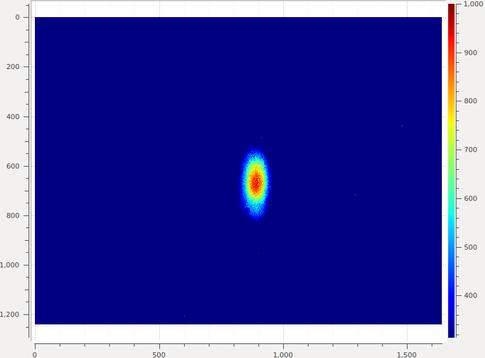XFEL: “First light” at two more instruments
“First light” at two more instruments
Scientists have successfully directed the first X-ray flashes into two further instruments at the European XFEL. On the morning of 26 July, the shutter of the Small Quantum Systems (SQS) instrument was opened, and the facility’s X-ray beam was allowed to enter for preliminary tests. A short while later, scientists directed the beam into the Spectroscopy and Coherent Scattering (SCS) instrument as well.
The undulator that generates light for both instruments, called SASE3, lased for the first time in February. Now that the beam is available at both instruments, their commissioning can begin. User operation of the SQS and SCS instruments is scheduled to start in November of this year. Two instruments, SPB/SFX and FXE, fed by the SASE1 undulator, started operation already in September 2017. Two more, MID and HED at the SASE2 undulator beamline, will follow soon after SQS and SCS.Each scientific instrument at European XFEL is optimized for a particular research purpose. The SASE3 instruments are designed to perform studies using longer wavelength, or so-called “soft”, X-rays. The SQS instrument is specialized for the study of fundamental processes such as how—and how fast—chemical bonds break in molecules, or what happens on the atomic level when materials absorb many photons at the same time. The SCS instrument will focus on the investigation of fast changes in material properties, such as within magnetic materials, superconducting materials, and will also look into chemical reactions and light-matter interactions. The research at these two stations has relevance for basic research but also for the development of new materials in the fields of IT, medicine, energy research, and catalysts, among others.
“This is another important step towards providing users an even wider array of research opportunities at our facility. Congratulations to all colleagues from European XFEL and DESY, who contributed to this success,” European XFEL Managing Director Prof. Robert Feidenhans’l said. Scientific Director Prof. Serguei Molodtsov added: “After many years of work on the beamlines, instruments, and detectors we now reach the point where we will finally be able to test them with the European XFEL’s unique X-ray beams. There are still challenges to meet before we are ready for the first users to come, but we look forward with confidence to the commissioning of the instruments in the weeks and months to come!”

The SCS (left) and SQS (right) instrument groups, both standing in front of the screens showing the first beams in their respective instruments.

